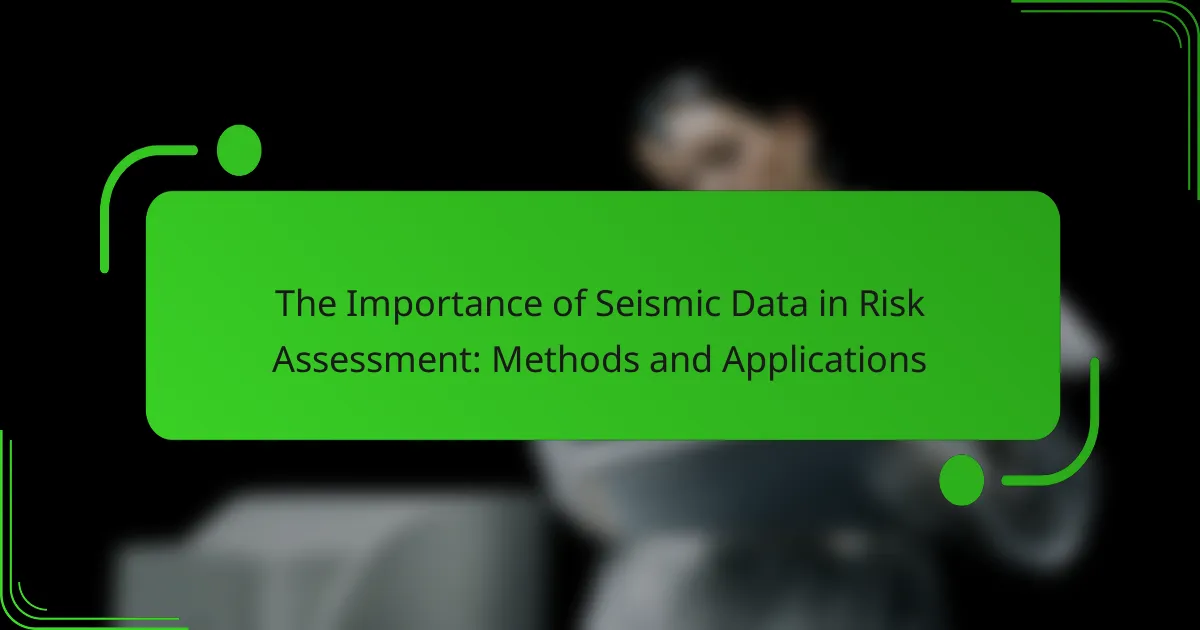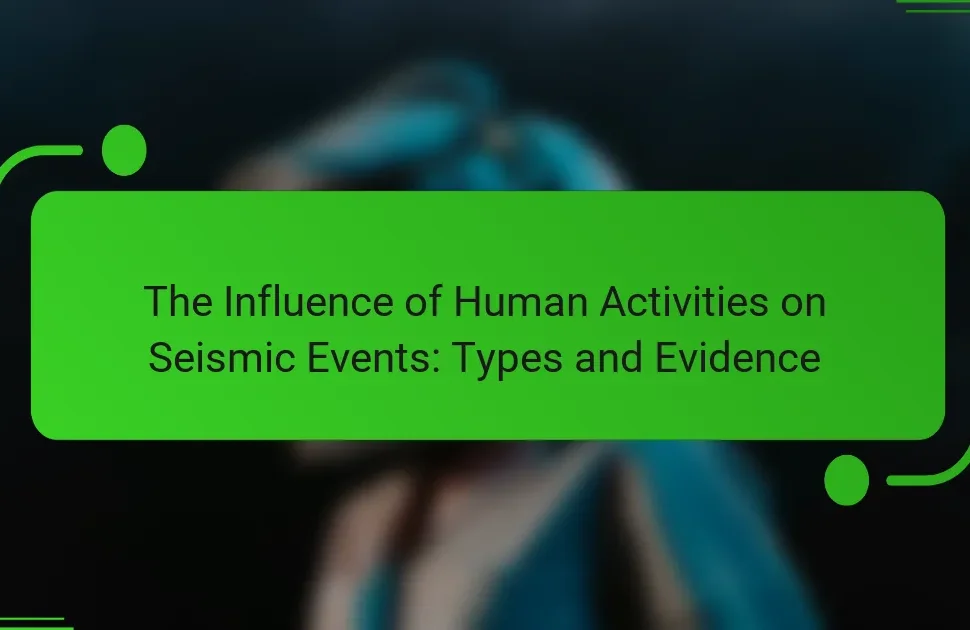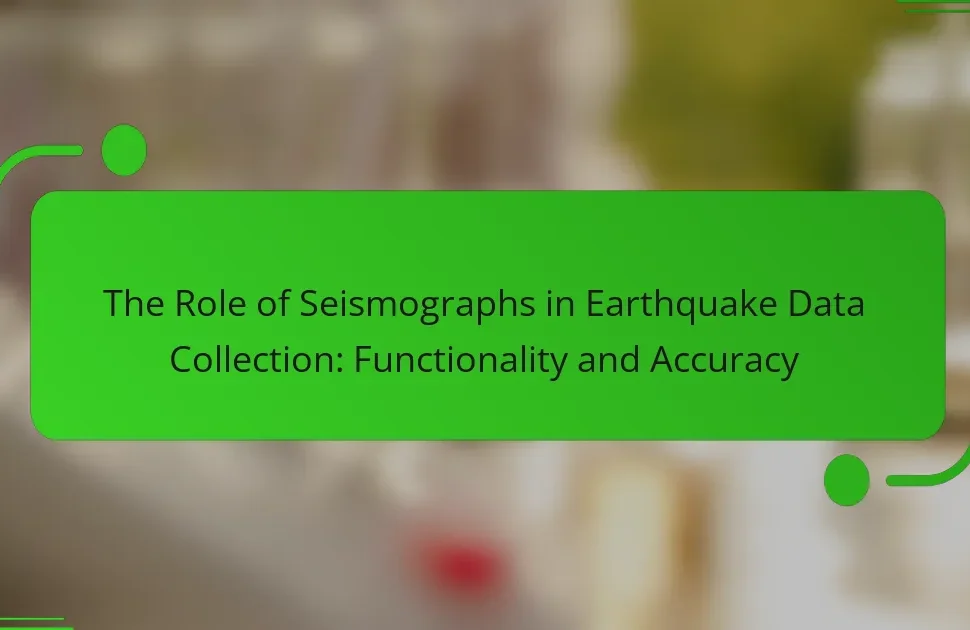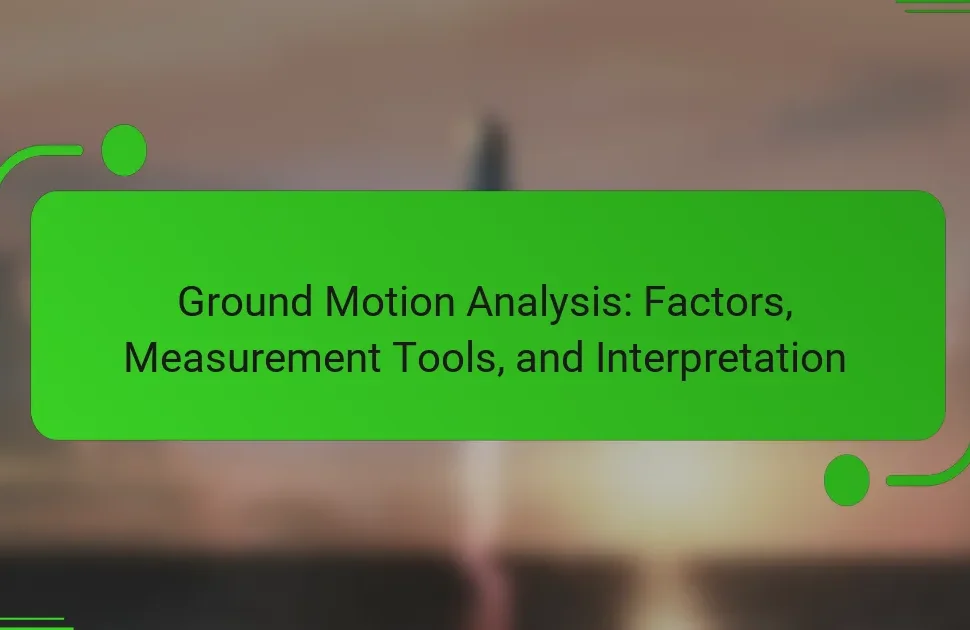Seismic data is essential for assessing the risks associated with earthquakes, providing critical insights into fault lines, seismic activity, and potential impacts on structures and populations. By analyzing this data, engineers can design buildings that are resilient to seismic forces and predict the likelihood of earthquakes in specific regions. Historical seismic data enhances understanding of past earthquake behavior, informing future risk assessments and emergency preparedness strategies. However, challenges such as data quality, interpretation complexity, and the integration of real-time information can affect the effectiveness of seismic data in risk assessment. This article explores the methods and applications of seismic data in evaluating earthquake-related risks and improving public safety.
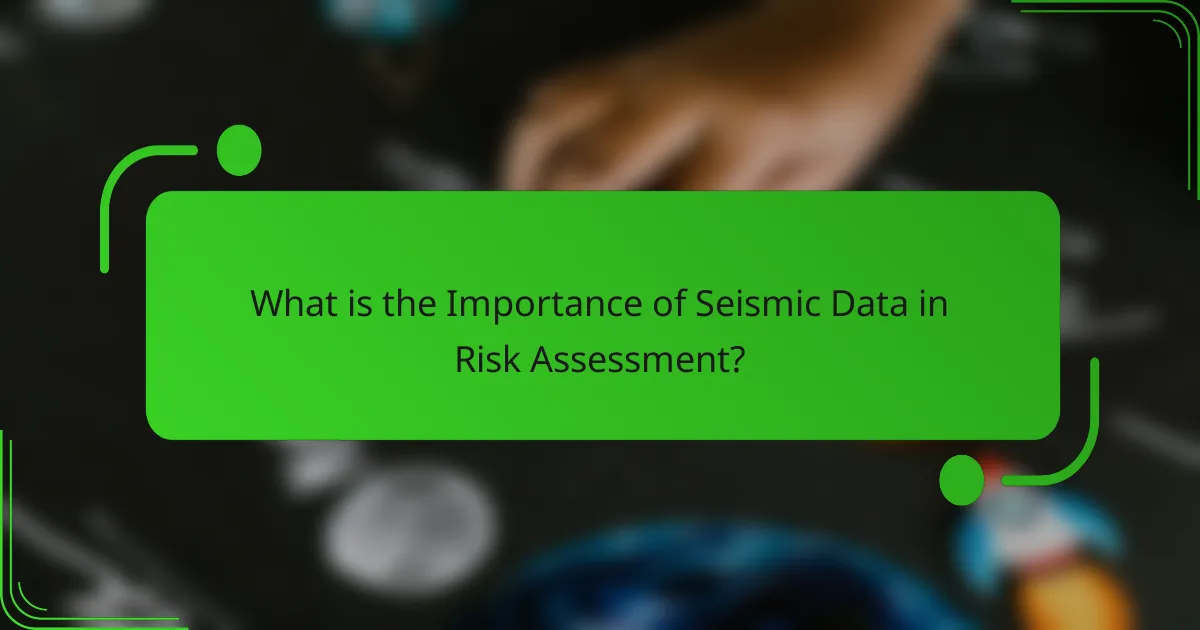
What is the Importance of Seismic Data in Risk Assessment?
Seismic data is crucial in risk assessment as it provides insights into the potential impact of earthquakes. This data helps identify fault lines and seismic activity in specific regions. By analyzing seismic data, engineers can design structures that withstand seismic forces. It also aids in predicting the likelihood of earthquakes occurring in certain areas. Historical seismic data allows for the assessment of past events and their consequences. This information is vital for emergency preparedness and disaster response planning. Furthermore, regulatory agencies utilize seismic data to establish building codes and safety standards. Overall, seismic data enhances public safety and mitigates risks associated with seismic hazards.
Why is seismic data critical for understanding natural hazards?
Seismic data is critical for understanding natural hazards because it provides essential insights into the Earth’s structural behavior. This data helps identify earthquake patterns, magnitudes, and potential impact zones. By analyzing seismic waves, scientists can assess the likelihood of future seismic events. Historical seismic data reveals trends that inform risk assessments for vulnerable regions. For example, the 2011 Tōhoku earthquake in Japan highlighted the necessity of seismic monitoring for disaster preparedness. Accurate seismic data enables the development of early warning systems. These systems can save lives by alerting populations before an earthquake strikes. Overall, seismic data is foundational for effective hazard mitigation strategies.
What types of natural hazards can seismic data help assess?
Seismic data can help assess several types of natural hazards. These include earthquakes, tsunamis, and volcanic eruptions. Earthquakes generate seismic waves that can be measured to determine their magnitude and impact. Tsunamis are often triggered by underwater earthquakes, and seismic data can help predict their arrival and potential damage. Volcanic eruptions produce distinct seismic signals, allowing scientists to monitor volcanic activity and assess eruption risks. Studies have shown that accurate seismic monitoring reduces casualties and property damage during such events. For example, real-time seismic data has been crucial in earthquake early warning systems, significantly improving response times.
How does seismic data contribute to risk management strategies?
Seismic data contributes to risk management strategies by providing critical information about earthquake hazards. This data helps in assessing the potential impact of seismic events on infrastructure and populations. It enables the identification of high-risk areas through detailed geological analysis. By understanding ground motion patterns, planners can design buildings to withstand seismic forces. Historical seismic data also aids in predicting future earthquake occurrences. Furthermore, real-time seismic monitoring allows for timely alerts and emergency response coordination. According to the United States Geological Survey, incorporating seismic data into urban planning reduces vulnerability to earthquakes. This proactive approach enhances community resilience and safety.
What are the key components of seismic data?
The key components of seismic data include seismic waves, geophones, and data processing software. Seismic waves are generated by natural or artificial sources and travel through the Earth. Geophones are devices that detect these waves and convert them into electrical signals. Data processing software analyzes the recorded signals to create images of subsurface structures. These components work together to provide insights into geological formations. Accurate seismic data is essential for applications in risk assessment, such as earthquake preparedness and resource exploration.
What types of seismic data are commonly collected?
Commonly collected types of seismic data include ground motion data, seismic waveforms, and earthquake catalogs. Ground motion data measures the displacement, velocity, and acceleration of the ground during seismic events. Seismic waveforms capture the time series of seismic waves as they travel through the Earth. Earthquake catalogs provide historical data on the location, magnitude, and depth of past seismic events. These data types are essential for analyzing seismic hazards and assessing risks. They support the development of building codes and safety regulations. Accurate seismic data collection is crucial for effective risk management and disaster preparedness.
How is seismic data processed and analyzed?
Seismic data is processed and analyzed through several key steps. First, raw seismic signals are collected using geophones or accelerometers. These devices capture ground motion caused by seismic waves. The collected data undergoes digitization to convert analog signals into a digital format.
Next, data processing techniques like filtering and noise reduction are applied. This enhances the quality of the seismic signals. After cleaning the data, it is subjected to various analyses. Techniques such as seismic imaging and inversion are used to interpret subsurface structures.
Finally, the analyzed data is visualized in the form of seismic sections or 3D models. This visualization aids in understanding geological formations and assessing potential risks. The application of these methods is crucial for accurate risk assessment in geoscience.
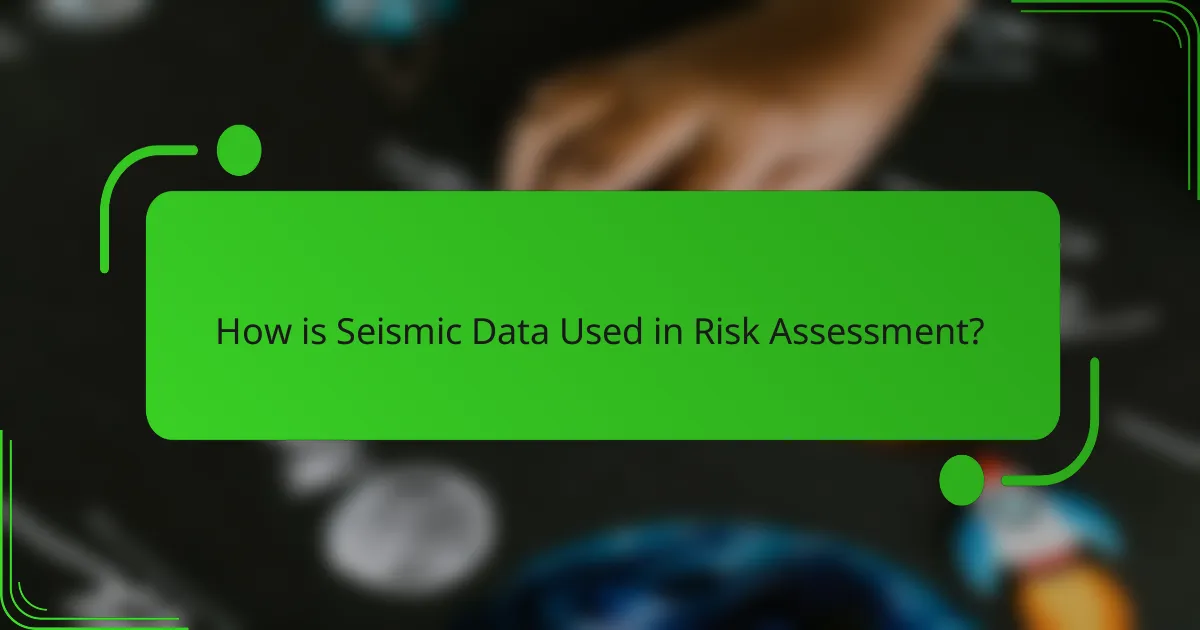
How is Seismic Data Used in Risk Assessment?
Seismic data is used in risk assessment to evaluate the potential impact of earthquakes on structures and populations. This data helps identify seismic hazards by analyzing ground motion patterns. Engineers and scientists utilize seismic data to create models that predict building performance during earthquakes. These models assess structural integrity and safety. Historical seismic data provides insights into past earthquake behavior, aiding in future risk predictions. Additionally, seismic data informs land-use planning and emergency preparedness strategies. By integrating seismic data, risk assessment becomes more accurate and effective in mitigating earthquake-related risks.
What methods are employed to incorporate seismic data into risk assessments?
Seismic data is incorporated into risk assessments through various methods. These methods include probabilistic seismic hazard assessment (PSHA), which evaluates the likelihood of seismic events and their impacts. Another method is deterministic seismic hazard assessment (DSHA), focusing on specific seismic sources and their potential effects. Ground motion prediction equations (GMPEs) are also utilized to estimate ground shaking based on seismic data. Additionally, site-specific studies analyze local geology and seismic responses. These methods collectively enhance understanding of seismic risks, enabling better preparedness and mitigation strategies.
How do probabilistic seismic hazard assessments work?
Probabilistic seismic hazard assessments evaluate the likelihood of earthquake ground shaking at specific locations. They utilize historical seismic data, geological studies, and statistical models. These assessments quantify the risk by predicting potential earthquake scenarios. They consider different magnitudes, distances, and depths of earthquakes. The results are typically presented as ground shaking maps. These maps indicate various probability levels for different intensities of shaking. Probabilistic seismic hazard assessments help inform building codes and land-use planning. They are essential for minimizing earthquake-related risks in urban planning and infrastructure development.
What role does historical seismic data play in risk evaluation?
Historical seismic data is crucial for risk evaluation as it provides insights into past earthquake activity. This data helps identify patterns and trends in seismic events over time. By analyzing historical records, researchers can estimate the likelihood of future earthquakes in specific regions. For example, areas with a history of frequent seismic activity are deemed higher risk. Additionally, historical data informs building codes and land-use planning to mitigate potential damage. Studies show that regions with comprehensive seismic histories can reduce economic losses by up to 30% through informed preparedness. Thus, historical seismic data serves as a foundational tool in assessing and managing earthquake risks effectively.
What applications are there for seismic data in various industries?
Seismic data has various applications across multiple industries. In the oil and gas industry, seismic data is used for exploration and reservoir characterization. This helps companies locate potential drilling sites and assess resource availability. In civil engineering, seismic data informs the design of structures to withstand earthquakes. This ensures safety and compliance with building codes.
In environmental studies, seismic data aids in understanding subsurface conditions. It can identify faults and groundwater resources, which is crucial for land use planning. The mining industry utilizes seismic data to locate mineral deposits and assess ground stability. This enhances operational efficiency and safety.
In academia, seismic data supports research in geology and geophysics. It contributes to advancements in understanding Earth’s processes. The insurance industry also uses seismic data for risk assessment. This helps in evaluating potential losses from seismic events.
How is seismic data utilized in construction and engineering?
Seismic data is utilized in construction and engineering to assess ground stability and design resilient structures. Engineers analyze seismic data to determine the potential impact of earthquakes on buildings. This data helps in identifying fault lines and predicting ground motion. Accurate seismic assessments lead to better building codes and safety standards. For instance, the ASCE 7 standard incorporates seismic design criteria based on seismic data. Additionally, seismic data informs site selection for new projects. It also aids in retrofitting existing structures to withstand seismic events. Overall, seismic data is crucial for minimizing risks associated with earthquakes in construction and engineering.
What benefits does seismic data provide for emergency management?
Seismic data provides critical insights for emergency management by enhancing disaster preparedness and response. It enables the identification of high-risk areas prone to earthquakes. This data aids in the development of effective evacuation plans and resource allocation. It also supports real-time monitoring during seismic events, allowing for timely alerts. Historical seismic data informs building codes and land-use planning to minimize damage. Additionally, it facilitates public education on earthquake risks and safety measures. Research shows that regions utilizing seismic data experience reduced casualties and economic losses during earthquakes.
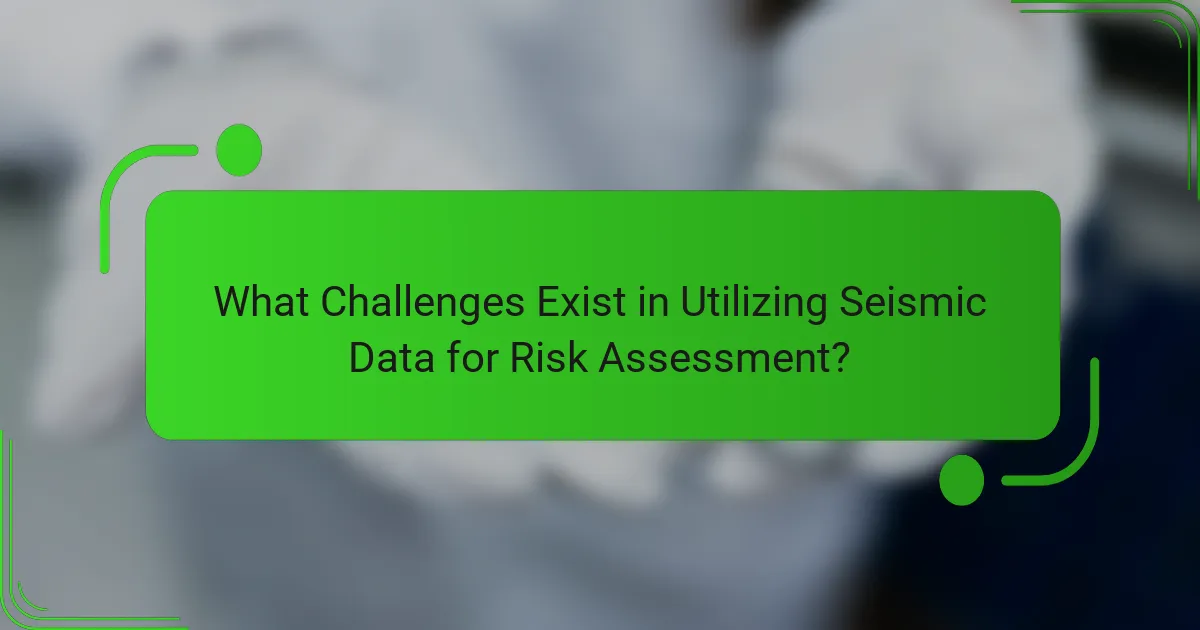
What Challenges Exist in Utilizing Seismic Data for Risk Assessment?
Utilizing seismic data for risk assessment faces several challenges. One major challenge is data quality and accuracy. Inconsistent data collection methods can lead to unreliable results. Another challenge is the complexity of seismic data interpretation. This requires specialized knowledge and expertise. Additionally, there is often a lack of comprehensive historical seismic data. Limited historical records can hinder effective risk assessment. Furthermore, integrating seismic data with other risk factors can be difficult. This complexity complicates the modeling process. Lastly, real-time data processing poses a significant challenge. The need for rapid analysis can outpace available technology. These challenges collectively impact the effectiveness of seismic data in risk assessment.
What limitations are associated with seismic data collection?
Seismic data collection has several limitations. These include spatial resolution constraints, which can lead to inadequate detail in complex geological settings. Temporal resolution is another limitation, as data may not capture rapid changes in seismic activity. Environmental noise can interfere with data quality, complicating interpretation. Additionally, certain geological formations may obscure seismic signals, leading to incomplete data. Costs associated with advanced seismic equipment can be prohibitive for some studies. Furthermore, data interpretation requires specialized expertise, which may not always be available. Lastly, seismic data is inherently uncertain due to the complexity of subsurface conditions.
How do data quality and availability affect risk assessments?
Data quality and availability significantly influence risk assessments by determining the accuracy and reliability of the information used. High-quality data enhances the precision of risk models. It allows for better identification of potential hazards and vulnerabilities. Conversely, poor data quality can lead to incorrect assessments and misguided decisions. Availability of data is equally crucial; limited access can hinder comprehensive evaluations. For instance, in seismic risk assessments, data from past earthquakes informs future predictions. Without adequate seismic data, the assessment of risks may lack depth and context. Studies show that regions with robust seismic data networks have more effective risk management strategies. Thus, both data quality and availability are essential for accurate risk assessments.
What are the challenges in interpreting seismic data?
Interpreting seismic data presents several challenges. One major challenge is the complexity of seismic wave propagation. Seismic waves travel through different geological materials, which can distort the data. Another challenge is noise interference from natural and anthropogenic sources. This noise can obscure the signals of interest. Additionally, the interpretation often relies on models that may simplify geological structures. These models can lead to inaccuracies in the analysis. The variability of geological conditions across regions further complicates interpretation. Lastly, the need for expert knowledge in geophysics and geology is essential for accurate analysis. Without this expertise, misinterpretations can occur.
How can organizations overcome these challenges?
Organizations can overcome challenges in using seismic data by implementing advanced data analytics. Utilizing machine learning algorithms enhances the accuracy of seismic interpretation. Training staff on the latest technologies improves data utilization. Collaborating with academic institutions fosters innovation in seismic research. Establishing clear communication channels ensures data sharing among stakeholders. Investing in robust data management systems enhances data accessibility. Regularly updating equipment keeps organizations aligned with technological advancements. Conducting continuous training programs builds expertise in seismic analysis.
What best practices should be followed when using seismic data?
Best practices for using seismic data include ensuring data quality and accuracy. This can be achieved by using calibrated instruments and validated processing techniques. Consistent data collection protocols should be followed to maintain reliability. Data should be analyzed with appropriate software that adheres to industry standards. Collaboration with geoscientists ensures comprehensive interpretation. Regular updates to seismic models based on new data enhance predictive capabilities. Documentation of methodologies promotes transparency and reproducibility. Finally, staying informed about advancements in seismic research improves data application.
What are the future trends in the use of seismic data for risk assessment?
Future trends in the use of seismic data for risk assessment include enhanced data integration and real-time analytics. Advanced machine learning algorithms will improve data interpretation accuracy. The incorporation of artificial intelligence will facilitate predictive modeling for seismic events. Increasingly, mobile and remote sensing technologies will provide more comprehensive data collection. Collaboration among global research institutions will enhance data sharing and standardization. Improved visualization tools will aid in risk communication to stakeholders. Additionally, there will be a growing emphasis on community-based risk assessment approaches. These trends are supported by ongoing advancements in technology and interdisciplinary research initiatives.
How is technology improving seismic data analysis?
Technology is improving seismic data analysis through advanced algorithms and machine learning techniques. These innovations enhance the processing speed and accuracy of seismic data interpretation. For example, deep learning models can identify patterns in seismic waves that traditional methods may overlook. Additionally, cloud computing allows for the storage and analysis of vast datasets in real-time. This capability leads to faster decision-making during seismic events. Furthermore, the integration of sensor networks provides more comprehensive data collection. This results in a more detailed understanding of seismic activity. Overall, these technological advancements are crucial for effective risk assessment and disaster preparedness.
What innovations are emerging in seismic monitoring systems?
Innovations in seismic monitoring systems include the use of advanced sensor technology, real-time data processing, and machine learning algorithms. These systems now employ high-sensitivity accelerometers that can detect smaller tremors. Real-time data processing enables immediate analysis of seismic events, enhancing response times. Machine learning algorithms improve the accuracy of earthquake predictions and risk assessments. Additionally, wireless sensor networks allow for more extensive coverage and remote monitoring capabilities. The integration of satellite data with ground-based sensors provides a comprehensive view of seismic activity. These advancements collectively enhance the effectiveness of seismic monitoring and risk mitigation strategies.
What practical tips can be applied when integrating seismic data into risk assessments?
Utilize high-quality seismic data for accurate risk assessments. Ensure data is collected from reliable sources and is recent. Apply geospatial analysis tools to visualize seismic data effectively. Incorporate historical seismic activity to identify patterns and trends. Engage interdisciplinary teams for comprehensive risk evaluation. Regularly update risk assessments with new seismic data to maintain accuracy. Validate findings through peer reviews and case studies. Document methodologies clearly for transparency and reproducibility.
Seismic data is the primary entity discussed in this article, highlighting its critical role in risk assessment related to natural hazards, particularly earthquakes. The article outlines various methods for incorporating seismic data into risk evaluations, including probabilistic and deterministic assessments, and emphasizes its applications across industries such as construction, emergency management, and resource exploration. Key components of seismic data, challenges in data collection and interpretation, and future trends in seismic monitoring technology are also examined, providing a comprehensive overview of how seismic data enhances safety and mitigates risks associated with seismic events.
